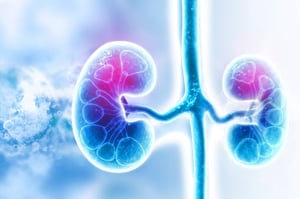Clinical Indicators of End-Stage Renal Disease (USRDS) 2018
(Gleaned from the 2018 USRDS Annual Data Report: Volume II: Chapter 2)
Given the high morbidity and mortality of individuals with end-stage renal disease (ESRD) who are receiving dialysis, quality improvement of renal replacement therapies (RRT) initiatives has long been a priority. Notable efforts from the Centers for Medicare &  Medicaid Services (CMS) include assessment and reporting of provider performance through Dialysis Facility Reports and Dialysis Facility Compare, as well as the Quality Incentive Program (QIP), which ties Medicare reimbursement to the achievement of selected quality targets.
Medicaid Services (CMS) include assessment and reporting of provider performance through Dialysis Facility Reports and Dialysis Facility Compare, as well as the Quality Incentive Program (QIP), which ties Medicare reimbursement to the achievement of selected quality targets.
Nevertheless, preventive care for ESRD patients has declined since 2010. In 2010, 36.4 percent of diabetic ESRD patients had comprehensive diabetes monitoring that included an A1c test, lipid exam and a diabetic eye exam. However, by 2016 only 28.8 percent of diabetic ESRD patients received comparable comprehensive diabetes monitoring.




